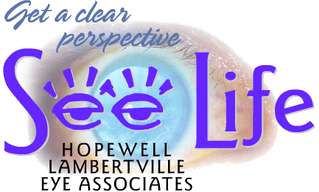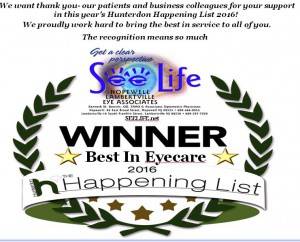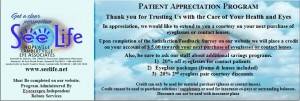"See the ball - Hit the Ball"
Ask the Phillies How that might win the World Series
Ask Bryce Harper how contact lenses have transformed his on field performance and how it can help enhance your kids as well as your own visual athletic, past-time activities and academic performance.
Pete Rose was noted for his simple hitting philosophy, "See the ball, hit the ball."
Vision, in all its complexity, is a key component to enhance and succeed in all aspects of life as well sports performance.
From: https://www.forbes.com/sites/timnewcomb/2019/03/28/bryce-harper-on-new-acuvue-contact-endorsement-what-he-looks-for-in-sponsorships/?sh=3673a00879ee (citation and photo) : Reiterated by Fox News during Game 3 Eight Inning while Bryce Harper was at bat:
From a interview with Bryce Harper in Forbes Magazine 2019:
“My eyes have to be in tip-top shape to recognize pitches at bat and to react quickly in the field, in all types of lighting conditions,” says Harper, -- He long needed contact lenses to correct his vision and has worn them since eighth grade, but A team optometrist was shocked to discover that the teenage slugger was "blind as a bat." "I was absolutely blind," Harper confirmed with a laugh. "(It was) pretty bad."
The 26-year-old (at the time of the interview) said he's been able to find more comfortable lenses in recent years, though he did take a few at-bats in regular glasses during a game last season after struggling to get his contacts in. And when Acuvue Oasys Transitions Contact Lenses approached him during the offseason about a lenses that might better help him deal with bright lights, he said he was "kind of hooked" and wanted to give them a try
"I remember my grandpa wearing the transition lenses, when I was younger. Maybe driving down the street, put his transition glasses on," Harper said. "But the (contacts), they’re brand new."
Harper has worn the contacts throughout spring training and said he's already noticed a difference. They adapt suddenly when exposed to light, he said, and are "fully engaged" within 45 seconds or so.
"The sunlight and the lights of the stadium would really interfere with my eyes a little bit and make me squint a little bit harder or not be able to look in the light as long," Harper explained. "So being able to have a lens that transitions into a darker lens for me has been huge. ... (That) split-second of making contact or striking out, or misreading a ball, it can definitely help me in that circumstance, as well."
In the competitive world, conditioning is everything. Athletes who can get an edge have a better chance of moving up the ladder to more and more elite levels of play. But one aspect of conditioning that is often overlooked is vision. Did you know that 59 percent of individuals aged 18-34 require contacts, glasses, or refractive surgery - showing professional athletes prefer to use contact lenses on the field.
In a study, Zeri et al, contact lenses were the preferred system of correction in sports compared to spectacles or refractive surgery, but this preference was affected by the type of sport practiced and by the age and level of sports activity for which the preference was required. As such, it would best to consult with the doctors of Hopewell – Lambertville Eye (www.seelife.net) to assist in which modality would best serve the individual base don their needs.
Ignored or undetected problems in the visual system have stopped many athletes' progress before making it to the high school - college levels or even professional heights -- and has even ended otherwise promising professional athletic careers. Vision can be conditioned just like any other physical attribute, and the earlier this conditioning (correction) starts, the better.
There are a limited number of sports contact lenses that are engineered specifically for wear while playing sports, but that doesn’t mean that you can’t wear other forms of contact lenses while you play. Besides removing the risk of eye injury from shattered eyeglass lenses, contact lenses give you clearer vision overall. Plus, wearing contacts instead of glasses makes it easier to wear other protective equipment like helmets or goggles, providing your eyes protection from injury.
In fact, Dr. Daniels performed a study many years ago which suggested that the use of contact lenses can increase the peripheral visual extent of an athlete by 15% to 20% enhancing their on field or court performance. Peripheral or side vision is as important as central visual acuity for the athlete. Awareness and use of peripheral vision skills assists in knowing where one’s body is in space. The ability to keep one’s balance when moving is dependent upon this skill. Without it, the athlete is unstable in their stance when hitting a baseball, golf ball or when running.
Advantages of contact lenses over glasses or impact-resistant rec specs for sports.
- Better peripheral vision
- Unobstructed field of view
- Less likelihood of fogging up or getting splattered
- Less chance of injury
- Visual clarity and stability
- Better compatibility with safety equipment
ADVANTAGES OF CONTACT LENSES FOR SPORTS
Compared with eyeglasses, contact lenses offer a number of advantages to enhance your vision for sports competition:
- Better peripheral vision. Though sports eyeglasses can be made with large, wraparound-style lenses, most prescription eyeglasses have small, relatively flat lenses and small frames. This significantly limits peripheral vision essential for many sports.
- Unobstructed field of view. Contact lenses also provide a wide, unobstructed field of view, because no eyeglass frames block or distort what you see. You can view more of your surroundings and react faster to objects coming at you and to other players around you. You also can more easily see and react to ground balls or other objects at your feet.
- Less likelihood of fogging up or getting splattered. Unlike eyeglasses, contacts usually remain clear regardless of environment or weather conditions such as rain.
- Less chance of injury. Eyeglasses may break and cause an eye injury if you take a hard hit, but contact lenses won’t.
- More stable vision. When you wear eyeglasses, you can feel frames move slightly on your face with each stride. And you can have vision disturbances with eyeglasses when you run. With contact lenses, you also don’t need to worry about eyeglasses sliding down your nose or falling off.
- Better compatibility with safety equipment. For sports that require headgear or protective goggles, contact lenses don’t interfere with the fit or comfort of these safety devices.
- An added advantage of daily disposable contact lenses is that you don’t have to worry about daily lens care and storage. Wear the lenses for your game or for a day of fun, and then simply throw them away.
Risks of wearing contacts during sports
The main risk associated with wearing contact lenses during sports is the lenses can dislodge from the eye and get lost. However, this should be a very infrequent event when fit properly by the doctors at Hopewell Lambertville Eye (www.seelife.net).
Our optometric physicians will recommend not to swim in contacts , since it puts the lenses at risk of contamination via contact with the pool water, which can lead to an eye infection, unless you are wearing daily disposable lenses in which you discarded the lenses after use in the water. As such, you can appreciate clear vision in and out of the water.
In sports or during recreational activities, you need to see your best to be your best. Contact lenses give you the confidence and vision to reach your personal goals on and off the field.
If you are a sports enthusiast, or do you play sports occasionally or weekend warrior? The doctors Hopewell Lambertville Eye (www.seelife.net) can recommend a variety of contact lens options to include soft, hybrid, orthokeratology and scleral contact lenses as well as specialty tinted lenses such as the AcuVue Oasys Transitions or the Altius Sport lenses for all athletes.
Hopewell Lambertville Eye (www.seelife.net) offers the many contact lens options for all visual needs such as the Altius Sport Contacts (https://altiusvision.com/) with either Amber and Gray-Green lenses providing better contrast discrimination in bright sunlight, better contrast discrimination when alternating between bright and shaded target conditions, better speed of visual recovery in bright sunlight, and better overall visual performance in bright and shaded target conditions compared with clear lenses.
Another option is orthokeratology or CRT for myopia in which a retainer lenses are worn during the sleeping hours modeling the superficial cornea so that when the lenses are removed in the morning the individual has a full visual correction without contacts or need of eyeglasses. This is similar to orthodontia for the teeth - but for the eyes, an extremely safe and efficient method to address athletic concerns and myopia progression control.
See Well
- Contact lenses correct most vision problems 1, including:
- Near-sightedness (myopia): blurred vision far away
- Far-sightedness (hyperopia): blurred vision close up
- Astigmatism: blurred vision both far away and close up
- Presbyopia: blurred vision close up in aging adults
- Contact lenses - for vision correction that can feel and look natural 2.
- Some studies have shown that specially fitted contact lenses may help slow the progression of near-sightedness in children and teens, although they are not currently approved by the U.S. Food and Drug Administration for this purpose 3-9.
Feel Well
- The variety of contact lens materials and replacement schedules available allows eye doctors to select the best option for an individual’s eyes, lifestyle, and budget.
- Contact lenses allow individuals to maintain a natural appearance without glasses or, if they choose, to change the appearance of their eyes with colored contact lenses.
- Children, teens, and adults who wear contact lenses report feeling better about their physical appearance and ability to engage in sports and recreational activities compared to those who wear glasses 10-12.
Play Well
- Well-fitting contact lenses stay in place on the eyes and improve peripheral (side) vision during sports and activities.2, 13, 14
- Contact lenses do not fog up like glasses when outdoors, in low temperature work environments, or playing sports.
- Contact lens wearers can use non-prescription UV-blocking sunglasses to protect their eyes from the sun. Some types of contact lenses can provide extra UV protection—although they are not a substitute for sunglasses 15.
Be like Bryce (and Pete Rose) - have your eyes checked and if needed, consider the option of contacts lenses and /or safety sport eyewear for your athletic activity be it golf, tennis, pickle – ball, baseball, basketball, cycling, running, gardening, crafting….
Safety first – you only have one set of eyes - DO NOT take risks of injury that could alter your life.
For more information call for an appointment at Hopewell Lambertville Eye (www.seelife.net) Hopewell 609-466-0055 Lambertville 609-397-7020
======================================================================================================





